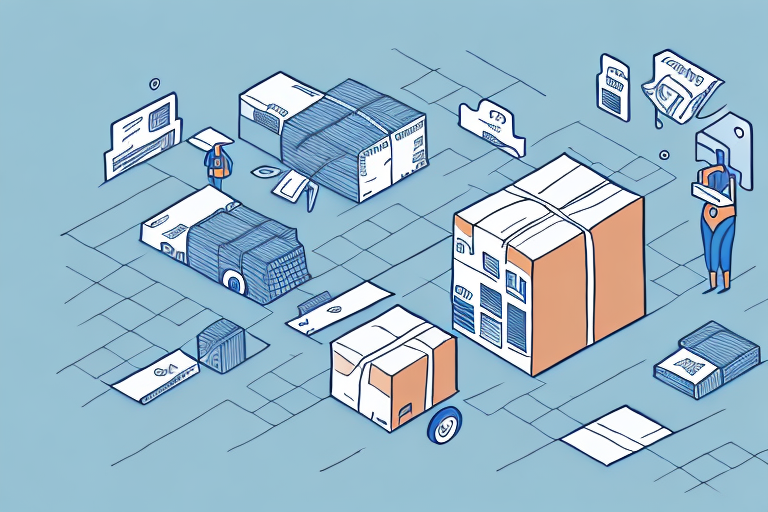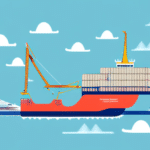Understanding FOB Origin: A Comprehensive Guide for Modern Businesses
In today's global economy, businesses rely heavily on efficient transportation and logistics to move their goods from one place to another. FOB Origin is a common term used in the shipping industry that refers to the shipping arrangement where the buyer is responsible for the shipping costs and risks associated with transporting goods from the seller's location to the buyer's location. In this article, we will delve into the fundamentals of FOB Origin, including its definition, mechanisms, benefits, drawbacks, and best practices to optimize your shipping strategy.
What is FOB Origin and Why is it Important?
FOB Origin, also known as Free on Board Origin, is a shipping arrangement where the buyer assumes responsibility for the transportation costs and risks once the goods are loaded onto the carrier. This means that from the moment the goods leave the seller's premises, the buyer is liable for any damages or losses that may occur during transit.
FOB Origin is crucial in the shipping industry as it clearly delineates the responsibilities between buyers and sellers. Understanding the terms of FOB Origin helps prevent misunderstandings and ensures that both parties are aware of their obligations, thereby facilitating smoother transactions.
One advantage of FOB Origin is that it allows buyers greater control over the shipping process. Buyers can select their preferred carriers and routes, potentially leading to cost savings and more efficient delivery schedules. However, it also requires buyers to have a good grasp of logistics and the complexities involved in international shipping.
Key Components of FOB Origin
Transfer of Ownership
The transfer of ownership under FOB Origin occurs when the goods are loaded onto the carrier. At this point, legal ownership shifts from the seller to the buyer, making the buyer responsible for any subsequent damages or losses during transportation.
Transfer of Risk
The transfer of risk also takes place at the point of loading. Once the goods are on the carrier, the buyer assumes all risks associated with the shipment. This includes risks related to transit delays, damages, or losses.
Cost Responsibilities
Under FOB Origin, the buyer is responsible for all transportation costs beyond loading, including freight fees, insurance, customs duties, and any additional services required. It is essential for buyers to factor in these costs when negotiating terms and pricing with sellers.
Calculating FOB Origin Shipping Costs
Determining shipping costs under FOB Origin involves several factors:
- Distance: Longer shipping routes typically incur higher costs.
- Weight and Size: Heavier and larger shipments cost more to transport.
- Mode of Transportation: Shipping by air is generally more expensive than by sea or land.
- Additional Services: Expedited shipping, special handling, and insurance can add to the cost.
According to the U.S. Bureau of Labor Statistics, transportation costs can constitute up to 10-20% of the total cost of goods sold, making accurate cost estimation under FOB Origin vital for maintaining profitability.
Buyers should obtain multiple quotes from reputable carriers to ensure competitive pricing and evaluate the most cost-effective transportation methods based on their specific needs.
FOB Origin vs. FOB Destination: Key Differences
While both FOB Origin and FOB Destination are shipping terms that clarify responsibilities in a transaction, they differ significantly:
- FOB Origin: The buyer assumes responsibility once the goods are shipped.
- FOB Destination: The seller retains responsibility until the goods reach the buyer's location.
Choosing between FOB Origin and FOB Destination depends on various factors, including control over the shipping process, cost considerations, and the nature of the goods being transported. For high-value or fragile items, FOB Destination may offer more security as the seller retains responsibility until delivery.
For more detailed comparisons, refer to the Harvard Business Review.
Common Mistakes to Avoid with FOB Origin
Miscalculating Shipping Costs
One common mistake is underestimating the total shipping costs. Buyers must account for all additional expenses beyond the initial freight quote, including insurance, customs duties, and potential tariffs.
Inadequate Insurance Coverage
Failing to secure comprehensive insurance can lead to significant losses in the event of damage or loss during transit. Buyers should always verify that their insurance policies adequately cover the value and nature of the goods being shipped.
Ignoring Compliance Requirements
International shipping involves various regulations and compliance requirements. Buyers should ensure they are familiar with the import/export laws of the destination country to avoid delays or legal issues.
Lack of Communication
Effective communication with carriers and sellers is essential to address any issues promptly and ensure transparency throughout the shipping process.
Benefits and Drawbacks of Using FOB Origin
Benefits
- Cost Control: Buyers can negotiate directly with carriers to potentially lower transportation costs.
- Flexibility: Greater control over the shipping process allows buyers to choose preferred carriers and routes.
- Transparency: Clear delineation of responsibilities reduces the risk of disputes.
Drawbacks
- Increased Responsibility: Buyers must manage all aspects of shipping, including logistics and compliance.
- Risk Exposure: Buyers assume the risk of loss or damage once goods are shipped.
- Potential for Higher Costs: Without expertise, buyers may incur higher costs due to inefficient shipping choices.
Understanding these benefits and drawbacks helps businesses make informed decisions about their shipping arrangements.
Negotiating FOB Origin Terms with Suppliers
Effective negotiation of FOB Origin terms can lead to more favorable shipping arrangements. Here are some strategies:
- Clarify Responsibilities: Ensure that both parties understand their obligations regarding costs, risks, and timelines.
- Discuss Payment Terms: Agree on payment schedules and methods to facilitate smooth financial transactions.
- Set Clear Timelines: Establish expected shipment and delivery dates to manage logistics effectively.
- Insurance Provisions: Negotiate who will cover insurance costs and the extent of coverage required.
Building a strong relationship with reliable suppliers and carriers can also lead to more flexible and cost-effective shipping terms.
Best Practices for Managing FOB Origin Shipments
Comprehensive Planning
Thoroughly plan each shipment, considering factors like lead times, carrier schedules, and potential delays. This proactive approach helps mitigate risks and ensures timely deliveries.
Effective Communication
Maintain open lines of communication with all parties involved, including suppliers, carriers, and customs brokers. Clear and consistent communication helps address issues promptly and keeps all stakeholders informed.
Utilize Technology
Implementing logistics management software can streamline the shipping process, providing real-time tracking, automated documentation, and data analytics to optimize shipping operations.
Regular Reviews
Periodically assess shipping performance, costs, and carrier reliability. Regular reviews enable continuous improvement and help identify areas for cost savings or efficiency gains.
Top Industries Utilizing FOB Origin Shipping
FOB Origin is prevalent across various industries due to its flexibility and cost-control benefits:
- Manufacturing: Used to transport raw materials and finished products between factories and distribution centers.
- Retail: Facilitates the movement of goods from suppliers to warehouses or directly to retail outlets.
- Agriculture: Applies to the shipping of produce, livestock, and agricultural equipment to processing plants or markets.
- Automotive: Essential for the distribution of parts and vehicles across global markets.
- Electronics: Used to transfer high-value components and finished electronic products securely.
Each of these industries leverages FOB Origin to optimize their supply chains, reduce costs, and maintain control over their logistics operations.
Conclusion
Understanding the intricacies of FOB Origin is essential for businesses engaged in international trade and shipping. By comprehensively grasping the transfer of ownership and risk, accurately calculating shipping costs, and implementing best practices, buyers can navigate the complexities of FOB Origin with confidence. Moreover, effective negotiation and management of FOB Origin terms can lead to significant cost savings and enhanced control over the shipping process. As global trade continues to evolve, staying informed about shipping terms like FOB Origin will remain crucial for maintaining competitive advantage and ensuring the seamless delivery of goods.
For further reading, consult resources such as the International Chamber of Commerce or the U.S. Department of Commerce for detailed guidelines and up-to-date information on shipping terms and international trade practices.




















